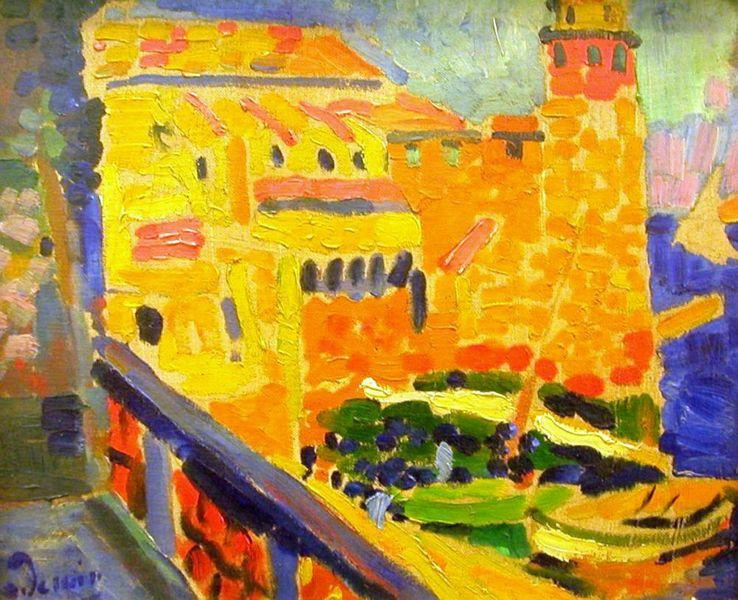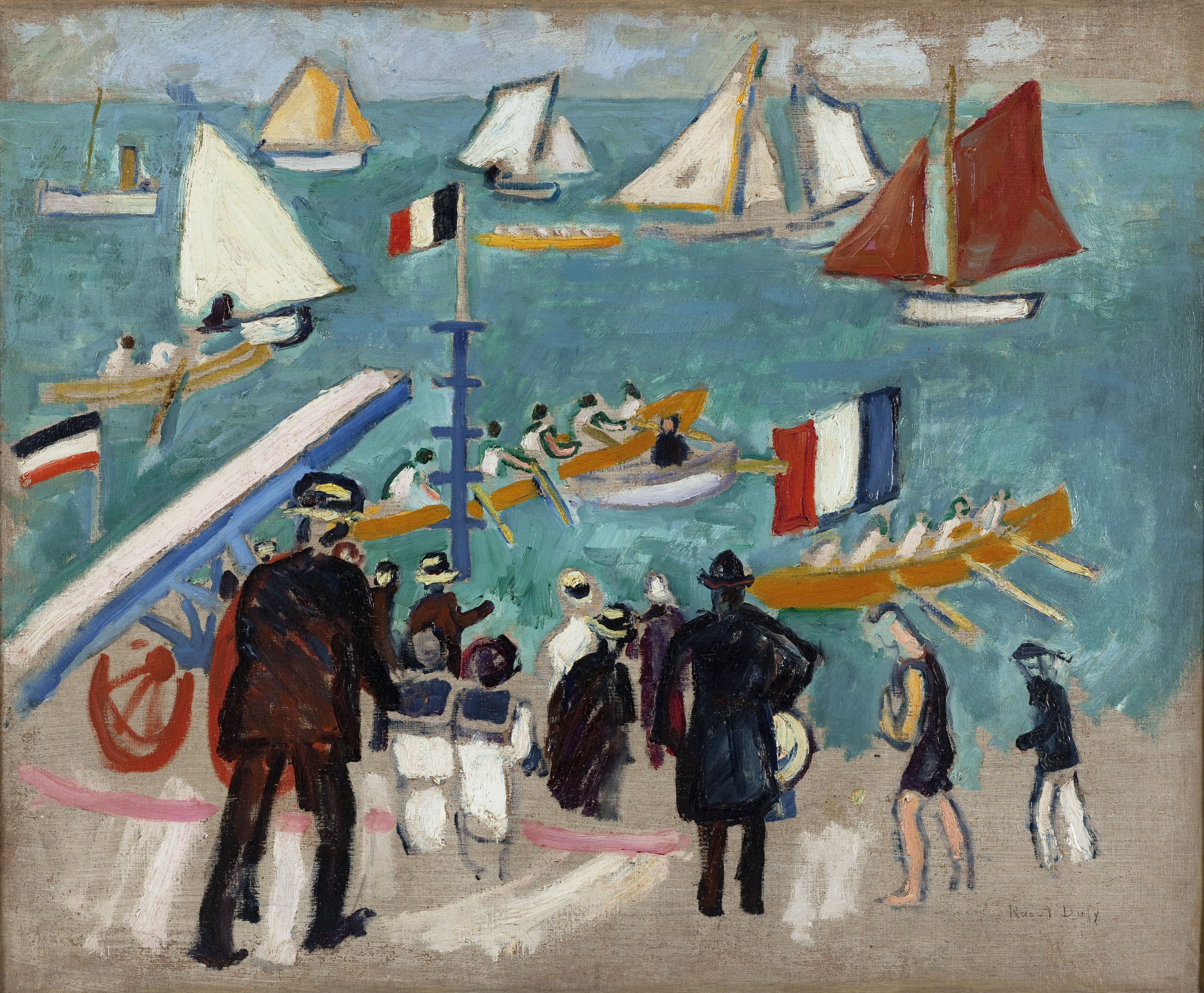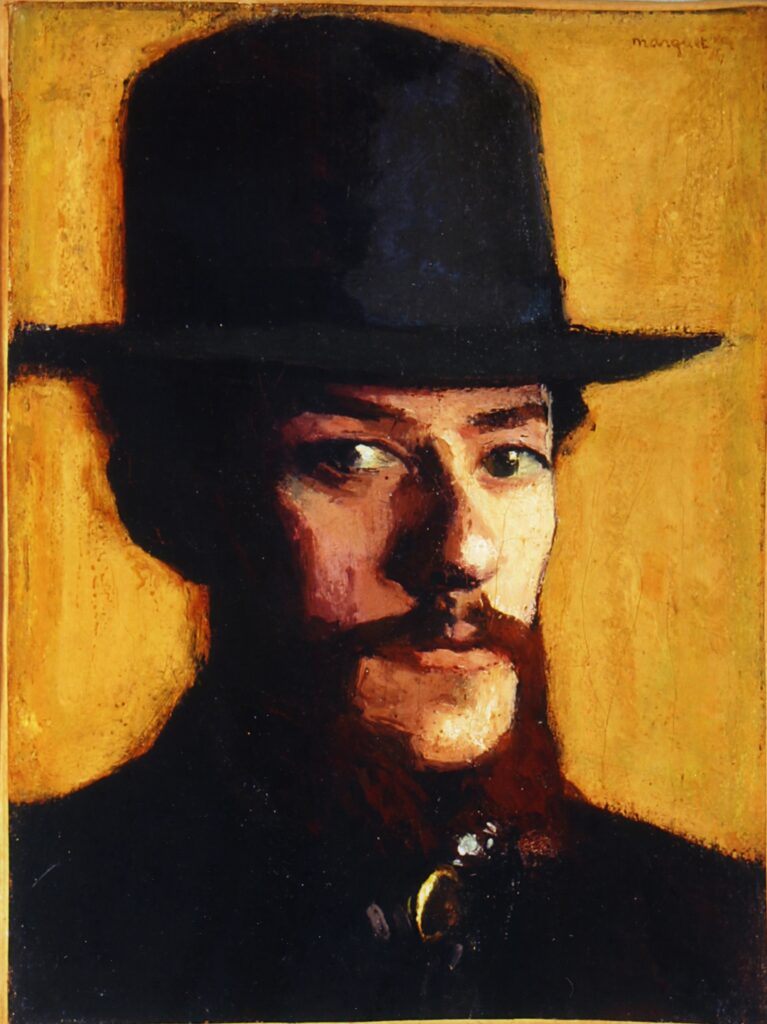
André Derain, Le phare de Collioure, Autre titre : L’église de Collioure. Paris Musées / Musée d’Art moderne de Paris
© 2023, ProLitteris, Zurich
The Fauves are revolutionaries of colour. They are the pioneers who revolutionised 20th century art. They are the ones who radically transformed the traditional conception of colour and form.
The Fauves include great 20th century artists such as Matisse and Derain, absolute masters but also rebels who subverted academic conventions and embraced the bold and pure use of colour.
In this post I take you on a discovery of the vibrant brushstrokes and bold colour contrasts of the Fauves. I present some of the extraordinary works they created and scandalised, expressing intense emotions and visual sensations. An adventurous journey into Fauve art awaits you, where colour reigns supreme and artistic freedom is expressed in all its magnificence.
The Fauves’ colour revolution: who they are and their origins

Raoul Dufy (1877-1953). “Les régates”. Huile sur toile, 1907-1908. Paris, musée d’Art moderne.
The Fauves were a group of artists who gave birth to the first avant-garde movement of the 20th century, a movement that was led by Henri Matisse joined by a group of painters including Henri Manguin, André Derain, Maurice de Vlaminck, Charles Camoin, Georges Rouault and Albert Marquet.
These artists exhibited their works for the first time in Room VII of the Salon d’Automne in 1905, contrasting the variations of atmosphere and vibrations of light that the Impressionist artists captured in their paintings.
WHAT THE TERM FAUVES MEANS
The Fauves exasperated Van Gogh’s lesson by exalting pure colour, triggering the wrath of the public and art critics, who violently attacked these young painters.
It was the critic Louis Vauxcelles, discovering in the room of their first public appearance, a bust of a child by the sculptor Albert Marque, who exclaimed:
“Donatello parmi les fauves” (Donatello among the beasts!)
Thus, the term ‘fauves’ was used to refer to these artists who understood art without rules and prohibitions.
WHO ARE THE FAUVES
Paris at the time was the point of reference for artists from all over Europe and this young generation of artists, trained at the Ecole des Beaux-Arts or in free ateliers, led their struggle to renew art from the ground up.
The first nucleus of Fauves, made up of Henri Matisse, Henri Manguin, André Derain, Maurice de Vlaminck, Charles Camoin, Georges Rouault and Albert Marquet, who painted in Collioure, on the Normandy coast, in Saint-Tropez and L’Estaque between 1905 and 1908, was joined by young painters from Le Havre: Emile Othon Friesz, Raoul Dufy, Georges Braque, then Kees van Dongen from the Netherlands and Pierre Girieu.
These artists can be associated with other painters such as Louis André Valtat, Jean Metzinger, Robert Delaunay, Etienne Terrus, Maurice Marinot and the young Auguste Herbin, who were present at important moments in the evolution of Fauvism or at the Salon des Indépendants or the Salon d’Automne.
Picasso also had close contacts with the Fauves and closely observed Matisse and Derain, confronting their research in relation to his pink period. He was also close to Kees van Dongen at the Bateau Lavoir, sharing with him a theme full of similarities.

Albert Marquet, Portrait de Pierre Mouliet. Fondation Pierre Gianadda, Martigny
© Dr.
SPACE AND THEMES IN THE WORKS OF THE FAUVES
The works of the Fauves are distinguished by their creation of space through the intense use of colour, with uniform and defined shapes. The colour nuances, instead of following a descriptive perspective, become expressive and colour contrasts take the place of traditional perspective.
In the faces, modelled details are eliminated and replaced by free and distant shades of reality. In other words, sensation becomes the protagonist along with emotion. Some artists still use the ‘mosaic’ technique derived from Neo-Impressionism, such as Matisse.
The Fauves’ landscapes include the Seine and the villages of Chatou, Pecq, Argenteuil and Normandy. Towns and streets are represented with the display of flags and banners. We cannot forget the enchanting nocturnal atmosphere of Parisian cabarets and circuses, which inspired works such as Georges Rouault’s ‘girls’ and ‘drunks’, Picasso or Van Dongen’s prostitutes and acrobats. This small nocturnal world reflects the vibrant atmosphere of the Butte Montmartre of the time.
Furthermore, the nudes, portraits and models in the studio are treated with the same extreme chromatic enthusiasm. Finally, Ludwig Kirchner’s bathers recall the vivid works of Matisse or Vlaminck.
Derain was astonished by the Oceania sculptures on display at the British Museum, which he described as ‘expressively shocking’. The vigorous reality of these African and other distant sculptural works, with their simplified aesthetics, anatomical decomposition and canons of beauty antagonistic to classical art, spills over into the Fauves’ workshops bringing with it a ‘universal language’. In this way, the fascination for the exotic is combined with the universality of artistic creation.
The Fauves were open to technical and multicultural innovations. In particular, ceramics experienced a renaissance at the beginning of the 19th century, and some artists devoted themselves to painting on this material, influenced by archaeological discoveries and other sources of inspiration. It was thanks to the ceramist André Metthey that they were trained in this new artistic expression, giving rise to the School of Asnières. Fauve artists demonstrated their interest in this creative process through exemplary works such as plates and vases, signed by Vlaminck or Derain.
Cécile Debray states that:
“The Salon d’Automne provides a favourable framework for the rehabilitation of this art and its introduction into art circles.

